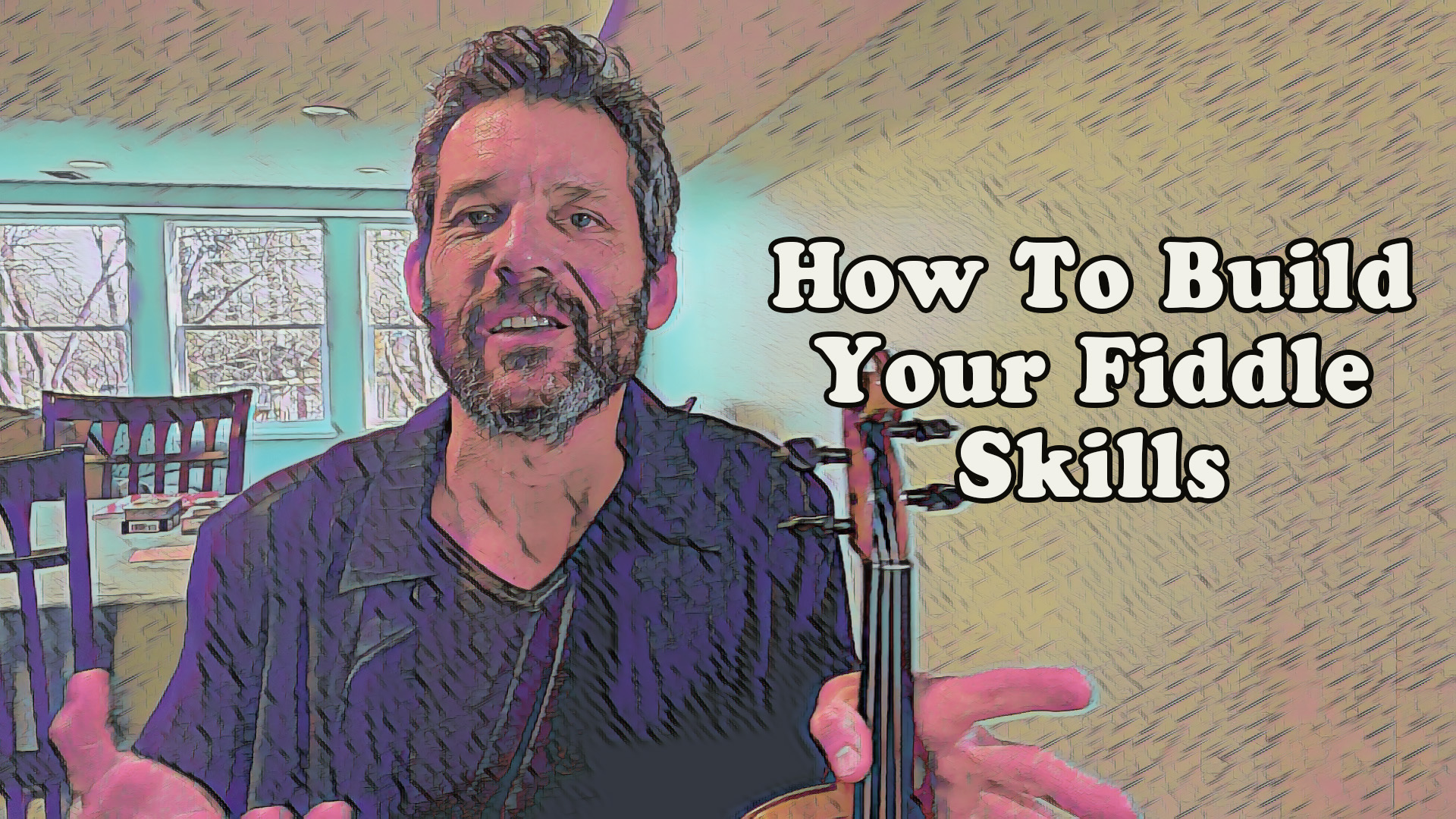You can steadily learn and improve any skill if you move your skills through a series of stages:
- Can’t do yet
- Can do with effort
- Can do with flow

In this lesson, I’m going to give you a method for doing that. It’s based on a framework Kathy Sierra teaches this in her book Badass.
Sometimes students get to a point in which they think, “I’m just not getting any better.” This is sometimes called the “Intermediate Plateau” or the “Intermediate Blues.”
Why does that happen?
They usually get the sense that they’re not improving. Remember that “Can do with effort” column I mentioned? The intermediate blues happens when there are too many half-learned skills piling up in that box.
To fix this, you need to honestly evaluate your skills and tunes and then make an effort to move them from the “Can do with effort” to “Can do with flow.” Remember that playing with flow doesn’t mean it’s absolutely perfect. It means you can play the tune at a comfortable tempo from start to finish.
Let’s do it
Say you’re learning a general skill: like the fiddle! I call it a general skill because it contains hundreds, maybe thousands of sub-skills.
Start by making a list of all the sub-skills and tunes that you’ve already learned. I call this a Master Practice List. Here’s a separate lesson on that: Fiddling With a Master Practice List
Examples of fiddle or violin sub-skills
- One-octave major scales (G, D, A)
- String crossing with the bow
- Plucking
- Slurs (playing more than one note per bow)
If a certain skill is too hard, it may just need to be broken down into smaller sub-skills.
For example, say you’re trying to play two-fingered double stops like: D3A1.
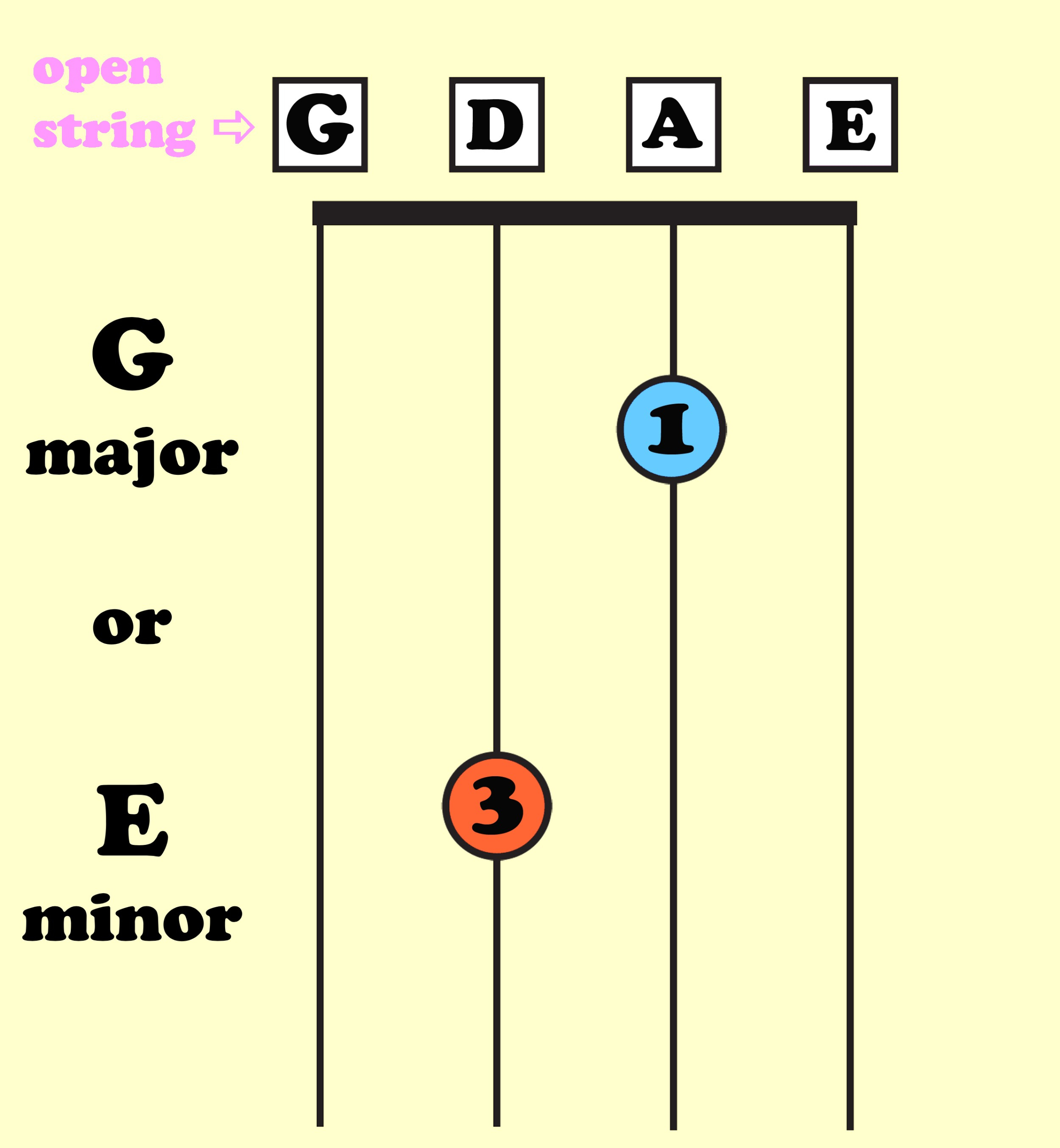
If it’s too hard, then break it into subskills and separately practice those things:
First practice the open string double stop (D0A0):
D0-0-A0-0-D0A0-D0A0-D0A0-D0A0
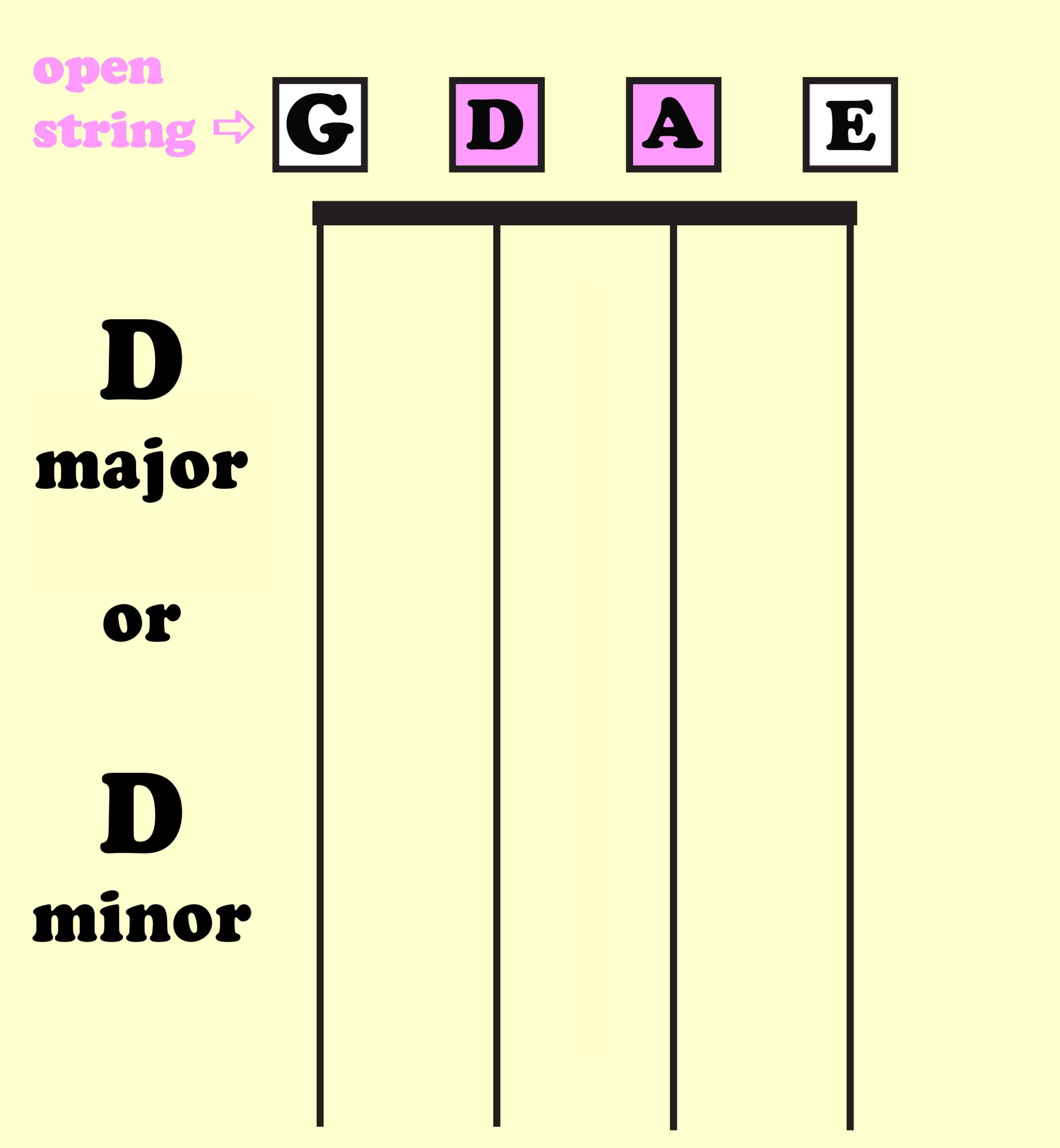
Then practice the interval D3-A1:
I call this finding the Hardest Part Of The Hardest Part.
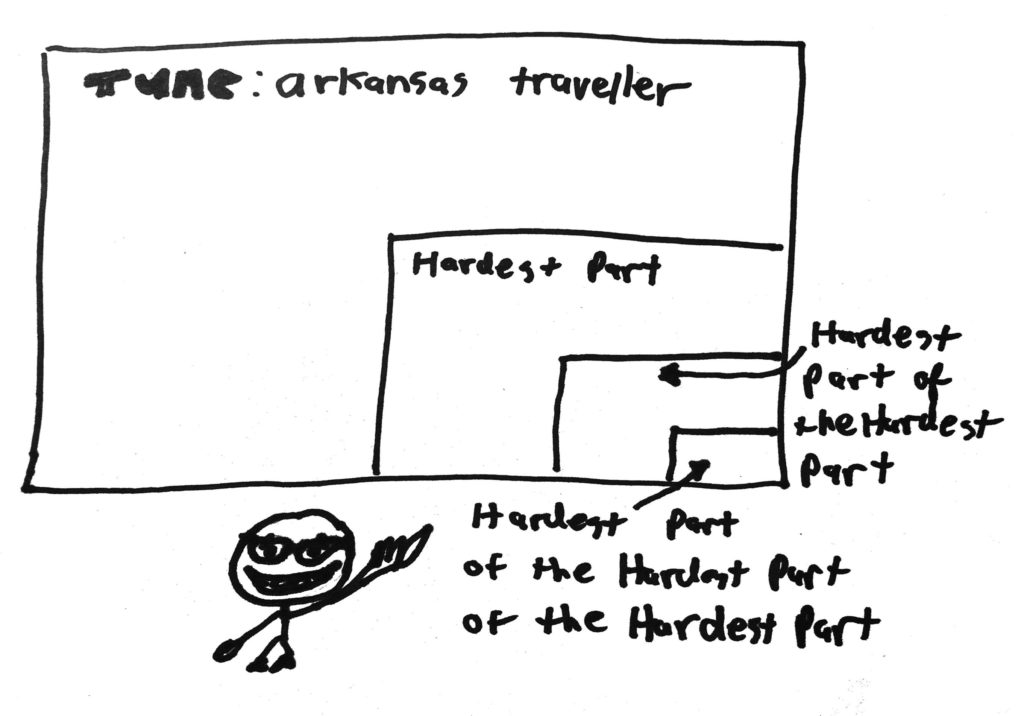
Create a skillsbuilder chart
The next step is to make a skillsbuilder chart. Draw three columns on a sheet of paper. Place each sub-skill into one of the three categories:
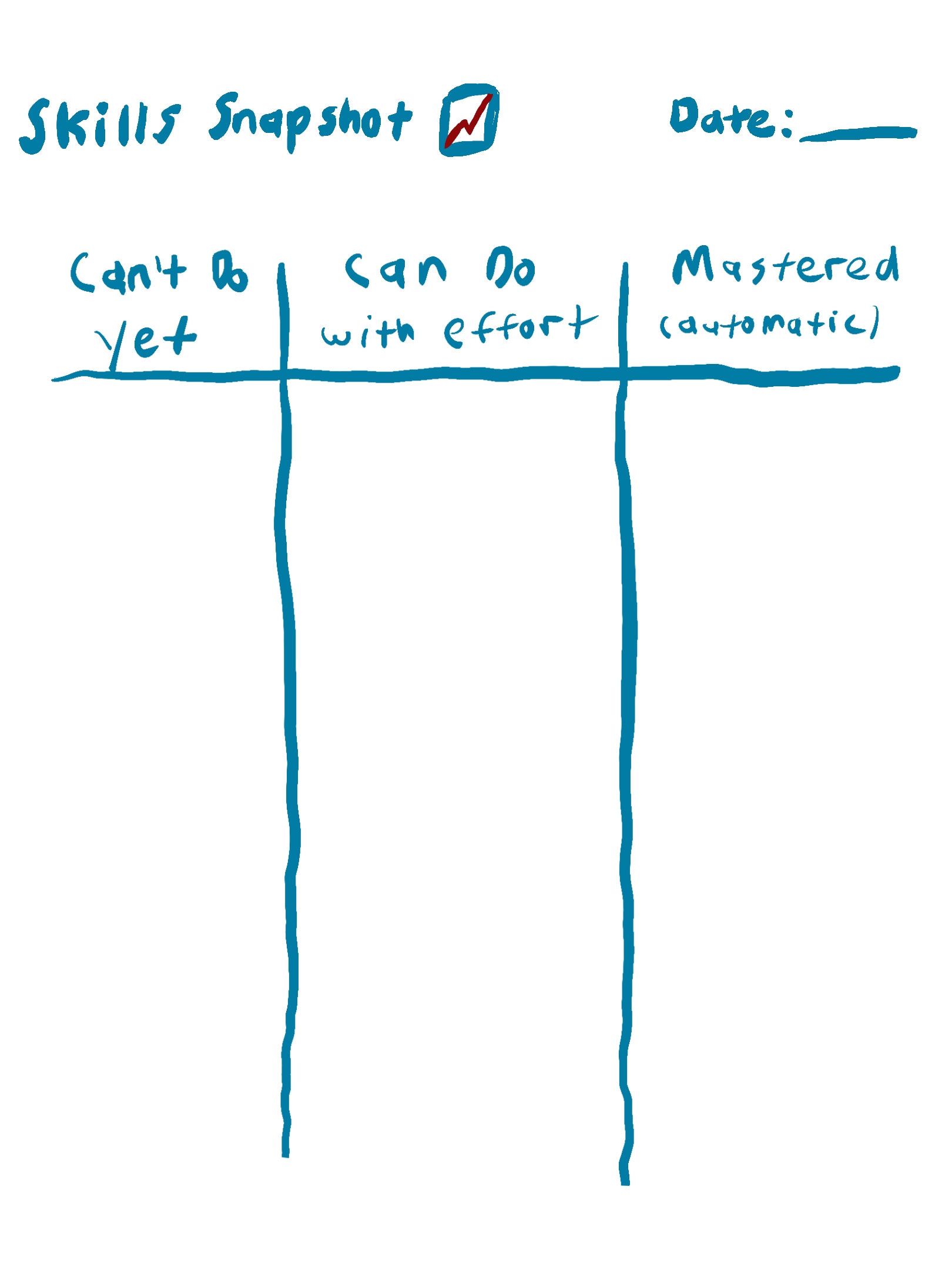
If you prefer, you could also create three lists in a note-taking app or spreadsheet.
The “Can’t do yet” column is a bucket list of things you want to do. I suggest placing things you’re going to learn soon near the top.
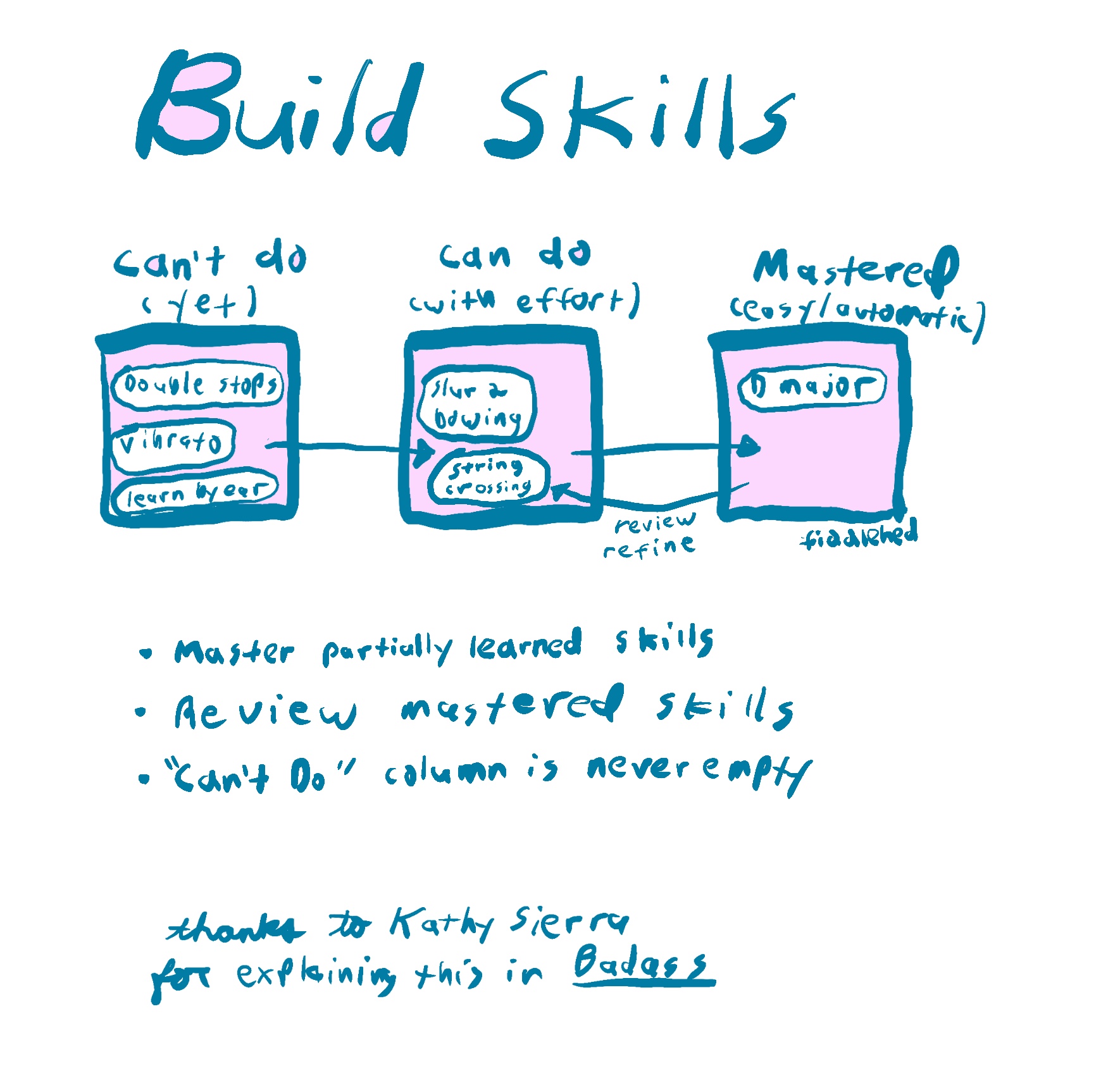
Place long-term learning goals lower on the list. Things like playing the Devil Went Down To Georgia as fast as Charlie Daniels.
The “Can do with effort” column are things that you can do but that need work. You have the basic gist of these things, but they need refinement. In the refinement phase, you work on tuning, timing, tone and flow.
Don’t let too many things pile up in the Can Do With Effort column. In other words, you don’t want too many partially learned skills.
The “Mastered” column are skills that you developed to the best level you could at the time. It may be helpful frame these skills that as “Incubating.”
As your overall set of skills evolves, you want to return to already mastered things for further refinement. You’ll now be able to practice this skill in new contexts.
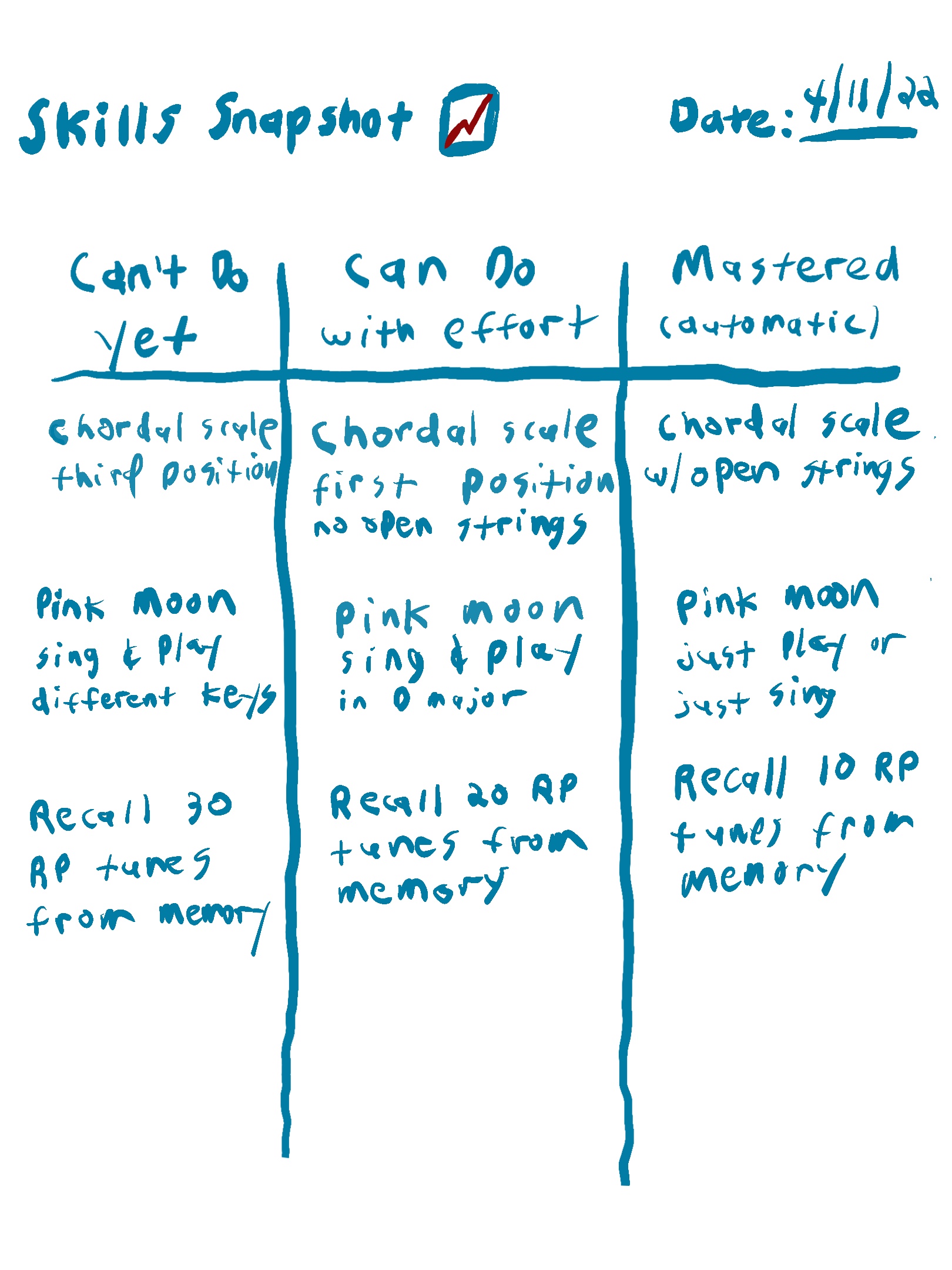
For example, say you mastered the skill of slur two bowing. You haven’t worked on it in two months.
Since then, you’ve learned a few new tunes: Road To Lisdonverna, Cripple Creek and Shady Grove. And you’ve learned new scales, like E Dorian. You can now practice slur two on these new tunes and scales. In this way, you refine the skill of slur two.
The beautiful thing is that you also improve the tune as you practice the slur two skill.
Becoming an expert does NOT mean you have nothing in the Can’t Do column. You always want to have something in the “Can’t do yet” column. Learning never ends.
This helps you overcome the The Physical Challenge of Fiddling. As you overcome these physical challenges and gain confidence, you’ll more easily overcome The Emotional Challenge of Fiddling.
Skillsbuilder vs. Practice Journal vs. MPL
The skillsbuilder is in between a daily practice journal and a master practice list.
Your practice journal is a snapshot of your practice on a particular day. If you keep track of what you do today, you can go further tomorrow. It’s like a leaf on a tree. 🍃
The skillsbuilder shows what you’re working on over a longer period of time, like a week or a month. This is more like a branch on a tree. 🌿
The MPL is a summary of everything you’ve done. This is like an evergreen tree that keeps growing every year 🌲
Tools
I’ll close by just talking about some tools you can use for the Skillsbuilder (these also work for the daily practice journal or master practice list).
📝 Paper and pencil
This is a super-simple way to gain awareness of your practice. You might want to take photos of this every month so you can see your progress over time.
💻 Digital app
Track your skills with Apple notes, Google docs, Roam, spreadsheet etc.
This is easier to update then a list on paper.
Again, you might want to save a version of this every month or so you can see your progress over time.
📝 Index cards
Write down every sub-skill and tune on its own card.
Once you’ve done that, place the cards into the three categories
Group using an index card filing box (with dividers) or pin them to a bulletin board.
Learn more here: Fiddling with Index Cards
Finally, remember the point of this is to make your practice more fun and productive. Find a way to make it work for you.
Are you ready to begin your fiddle journey? Sign up for a free two-week trial and get full access to all courses and group lessons. Plus, I’ll send you some free lessons tailored to your current skill level.
Click here to become a FiddleHed!
Further learning
- Micro-practice vs. Macro-practice
- The Physical Challenge of Fiddling
- Fiddling With A Master Practice List

